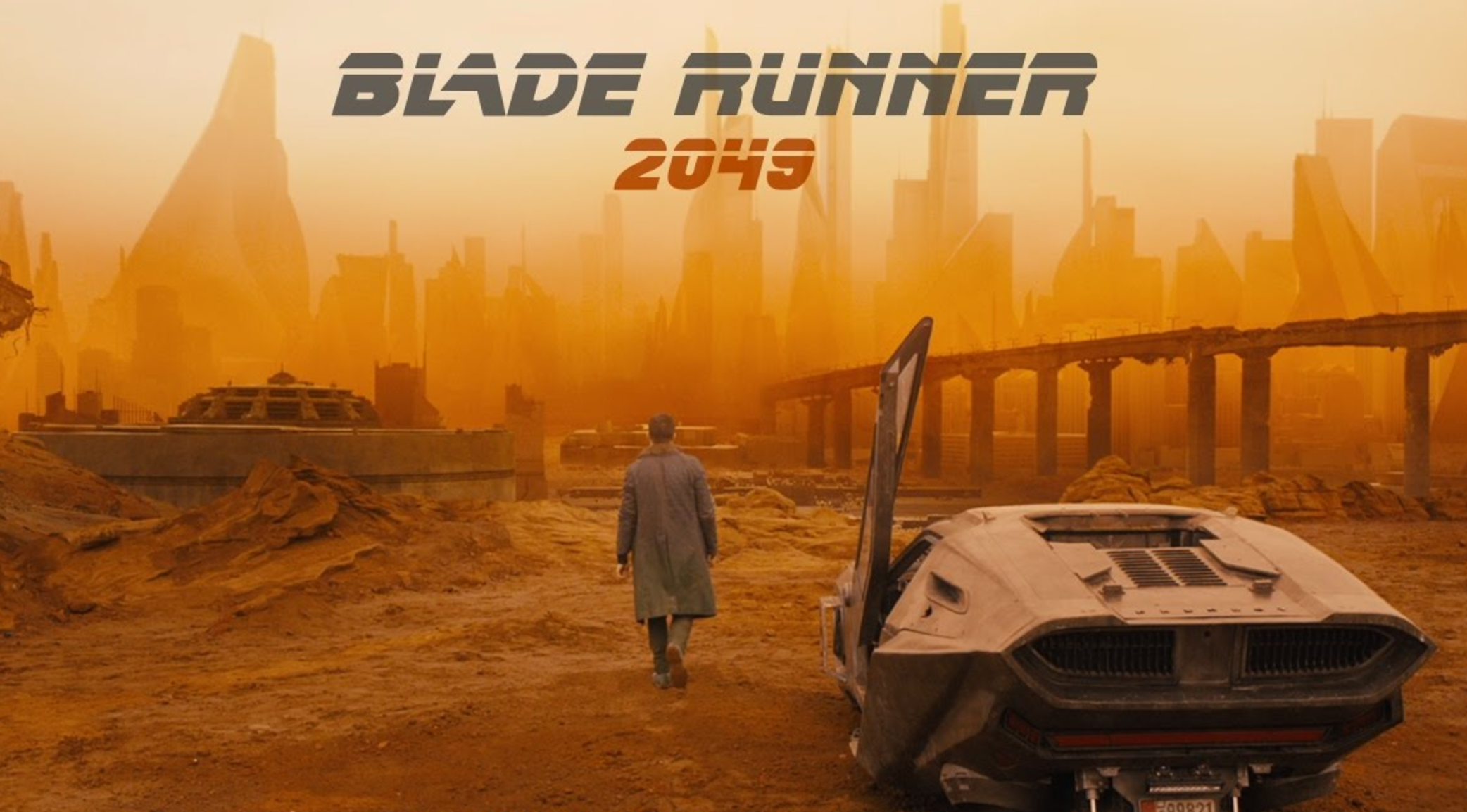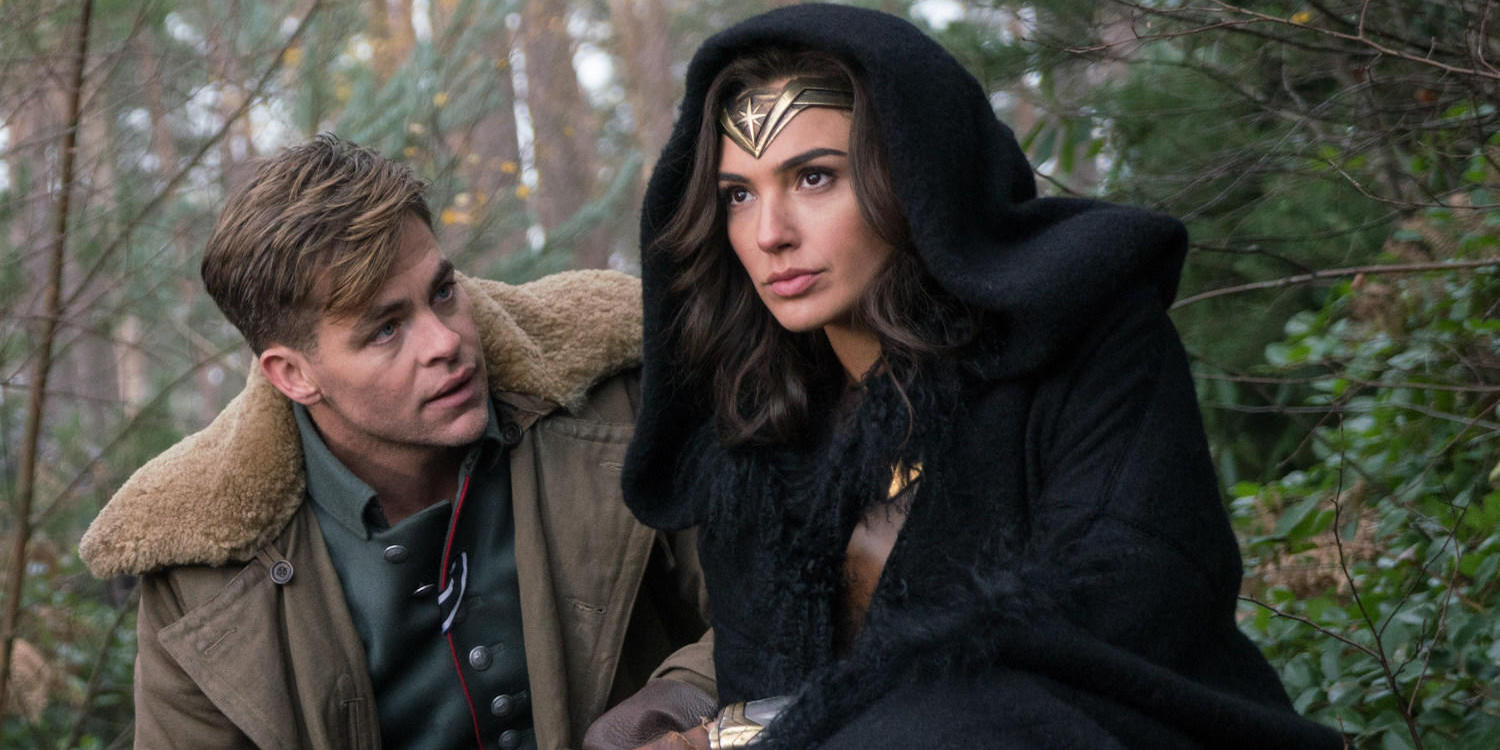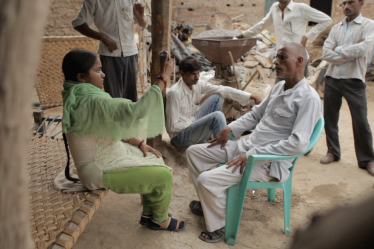

You will not be reading about even one plot point in this review. There will be nothing about Blade Runner 2049’s characters, subject matter, cameos, or philosophical underpinnings. Not to be self-serving, but since you’ve gotten this far in my critique, I’d like to suggest that unless you have another critic you know and trust to keep secrets, you should avoid reading other reviews. I’ve scanned the ones in Vanity, The Guardian, and other respected periodicals, and they all reveal basic plot points that will lessen the experience of watching the film for the first time. If you want to know a few things about why you should see the film without hearing a damn thing about the film itself, read on. Why not learn about a few of the behind-the-scenes artists who are responsible for this spectacular new film?
If you’ve seen the 1982 cyberpunk classic that has, unlike a number of 80s action-based science fiction films, stood the test of time, you’re already in-the-know . There are replicants that have gone off-book and there are blade runners that come after them. There are killings and there is sadness and tragic love and melancholy. Things are dirty and cynical and the landscape is at once bleak and overpopulated. The world of 1982’s Blade Runner is a place hope goes to die. Ridley Scott’s masterpiece is numbered among one of the top films in history, and has since influenced nearly all films of the genre. Given that, It’s the height of hubris attempting to go back into that world with another movie. I’m one of a huge population of sci-fi geeks who shook their head at the announcement. Bad idea, I thought. Then I saw Denis Villeneuve, the director of Sicario, Arrival, and Prisoners, and one of my favorite auteurs, was at the helm. Maybe this sequel would not be an insult to the fans of #6 on AFI’s Best Sci-Fi Films of All Time after all.
Blade Runner 2049 is one of the best sci-fi films I’ve seen in a long time, and certainly the equal to the first film. Roger Deakins, the director of photography, who has been nominated for for 13 Oscars, is going to cause a riot if he doesn’t win for this film. Where the look of the 1982 film was gritty and film noir inspired, 2049 is expansively bleak, and seems to believably capture the ravages of global warming and industrialization in a way that the audience will recognize from our worst imaginings of the future. Color is so hard to come by, it’s like it’s been criminalized. When a brighter palette is used, it’s at once a relief and an instant reminder of things lost. The screenplay is credited to writers Hampton Fancher and Michael Green, with the story by Fancher. They’ve managed to create a story that examples the best of what sci-fi can be: a place where the Big Questions can be asked. As with the 1982 film, it considers what it means to be human, albeit in an expanded and, arguably, a deeper way. The score by Hans Zimmer and Benjamin Wallfisch alternately blasts discordantly and thrums synthetic strings a-la-Vangelis, recalling his 1982 work. It is like a post apocalyptic lullaby, interspersed with terrifying alarms by Big Brother.
The acting, such that I can mention, is first rate, with all the players perfectly cast. Ryan Gosling is in Drive mode, playing the archetypal man with no name, portraying an inner need that compels and propels him forward. Harrison Ford couldn’t be better. The co-stars are largely women, all portraying their diverse characters believably, connecting to and drawing in the audience, whether driving us to want to see them succeed or fail, live or die.
If there is one aspect of the film that is a weakness, it’s the third act, where the events unfolding could have done so with a bit more brevity. The feeling the film drags is short-lived, however. It’s so engrossing that the thought is far beneath the enjoyment Blade Runner 2049 offers. In any case, based on their other films, the pacing is clearly a conscious decision by Villeneuve and award-winning editor Joe Walker (12 Years a Slave, Arrival). In the two hour and forty-three minute running time, they use the languid, considered shots that recall Arrival and parts of Sicario, creating the same slow building tension. Blade Runner 2049 owes far more to the works of director Andrei Tarkovsky and his classic 1972 film Solaris than the more recent action-heavy sci-fi films to which audiences have grown accustomed.
On a personal note, watching the film reminded me of my friend cinema artist John Alvin, who did the original poster in 1982. He told me he was endlessly inspired by the film, often watching it while painting other projects. He also mentioned to me once that he got the job of creating the key art directly from Ridley Scott, after a conversation they had about the architecture in the movie being, essentially, another character. John would have appreciated the landscape and the role it plays in the new feature.
All this is to say that you’ll want to see this film in a theater, on the biggest possible screen, and you’ll love it when you do. Villeneuve and his cast and crew have built a spectacular, thought provoking film that elevates the genre, and does Ridley Scott and Philip K. Dick proud.
5 out of 5 stars



